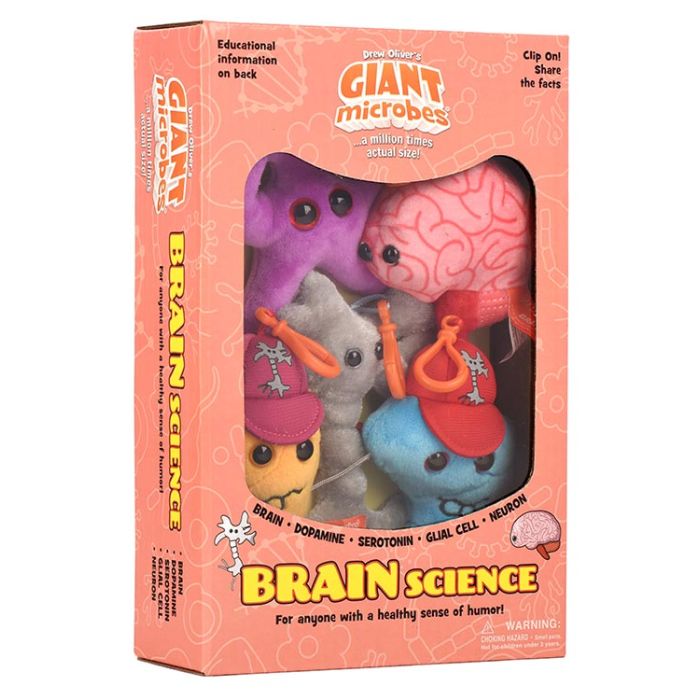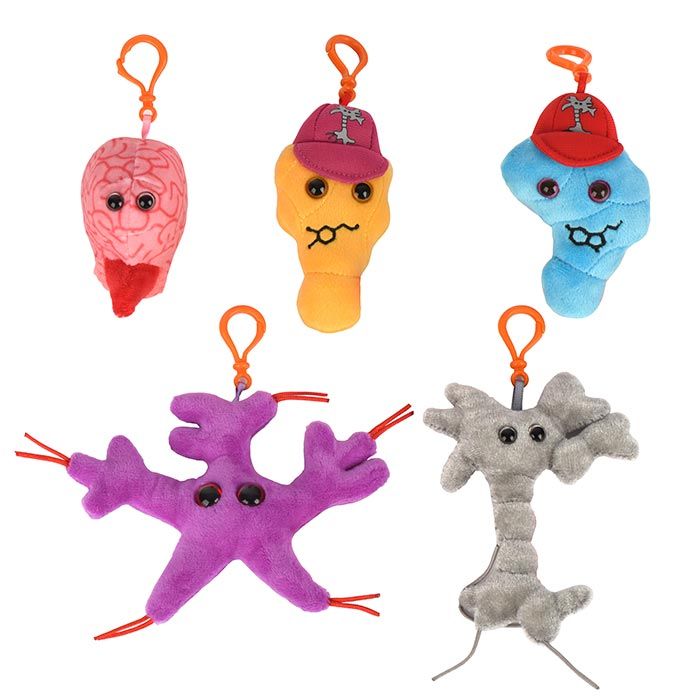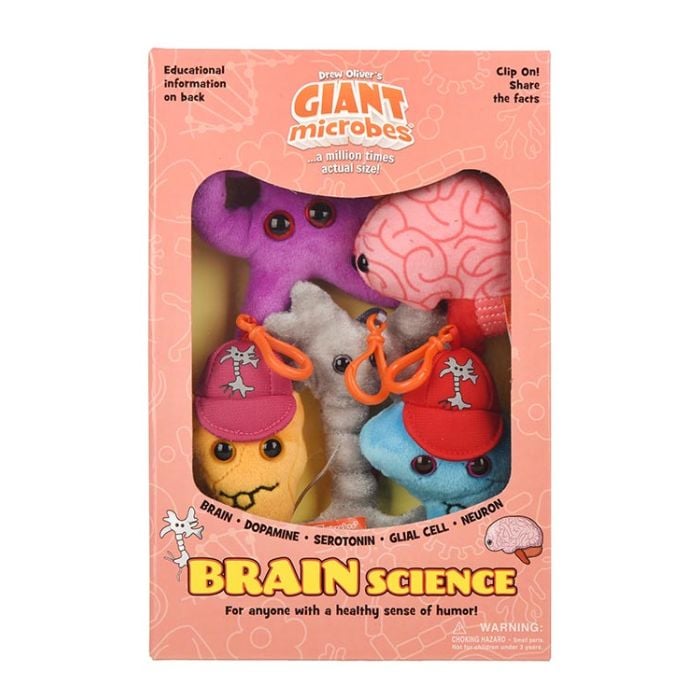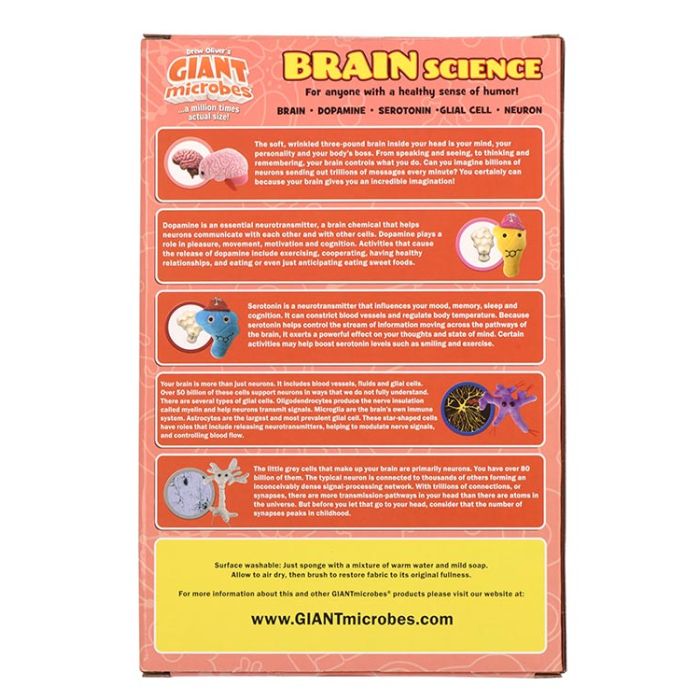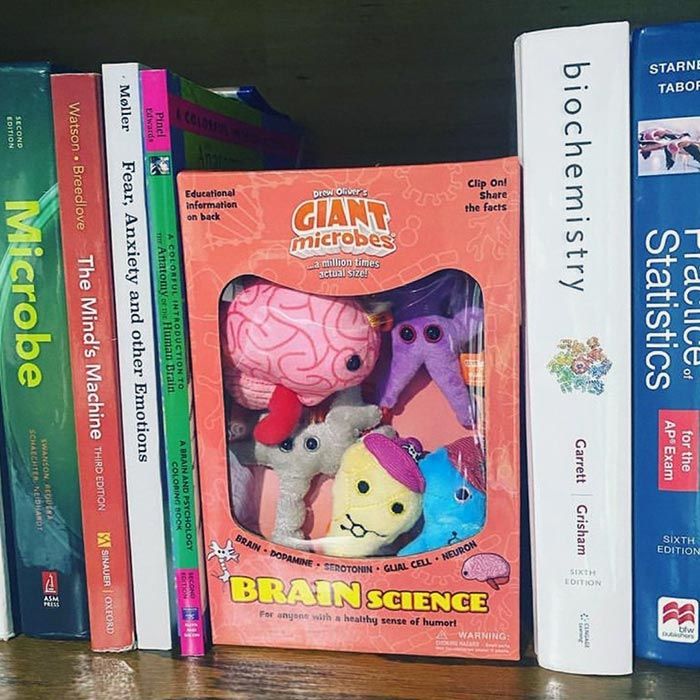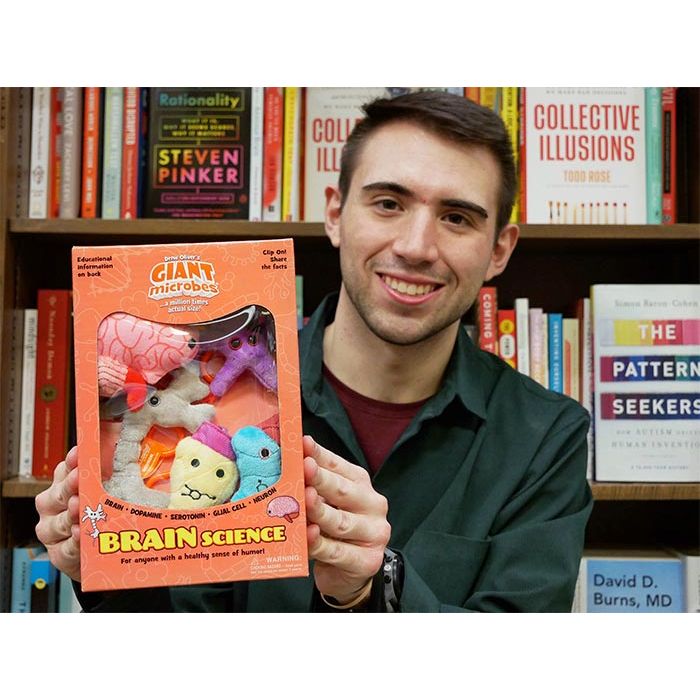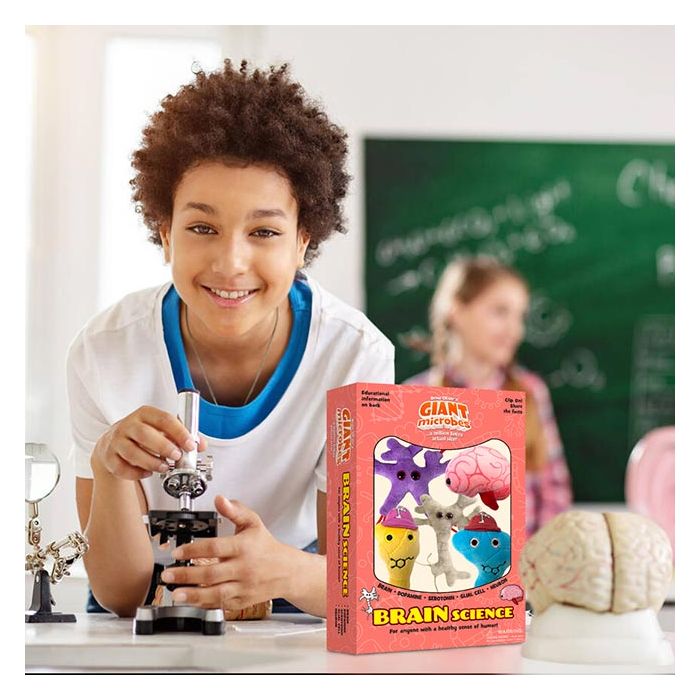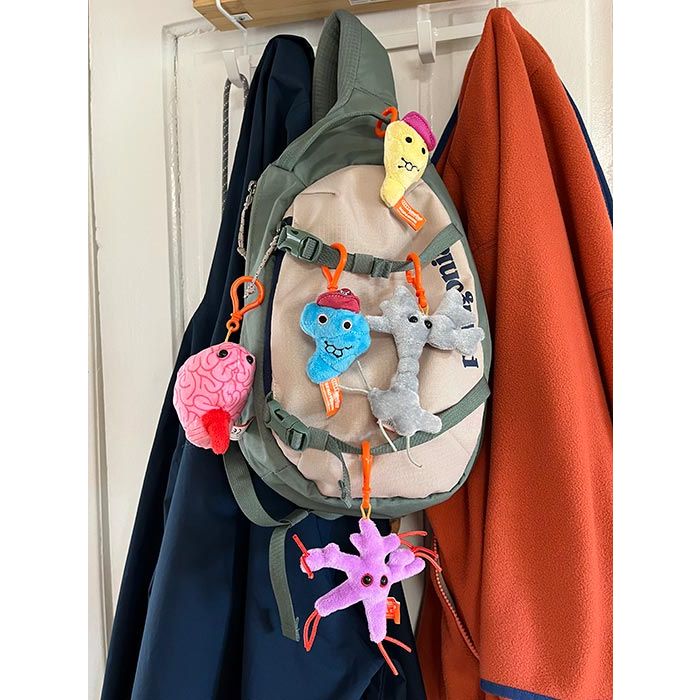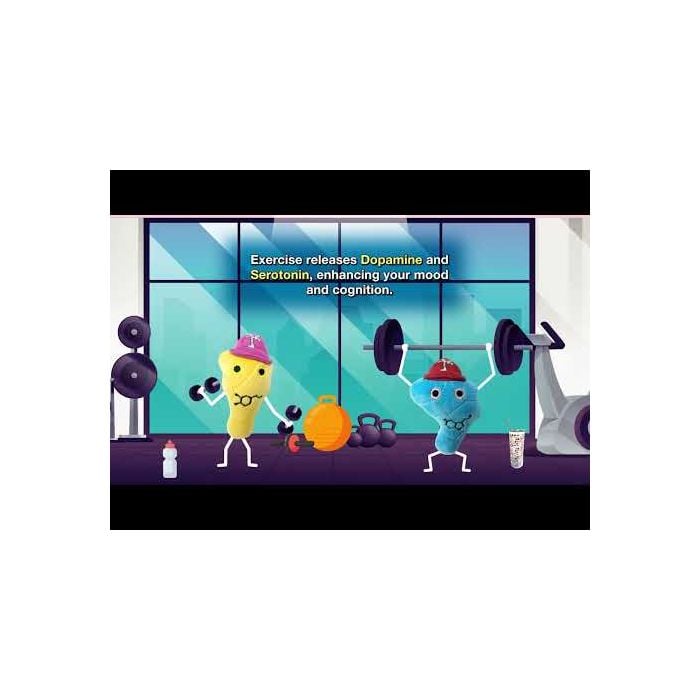Brain Science
Be smart and give your loved ones memorable original thoughts with these adorable brain cells, neurotransmitters and brain! This Brain Science themed box is an exciting educational gift for friends, family, scientists, students, teachers, healthcare professionals and anyone interested in the brain.
This memorable gift box will spark wonderful ideas! Be smart and give your loved ones original thoughts with these adorable brain cells, neurotransmitters and brain. Brilliant gift to “get well”, inspire, learn and have fun. Hands-on-way to learn about brain science, nervous system and the inner workings of your Brain.
Brain Science themed gift box includes these 3" mini microbe key chains: Brain, Dopamine, Serotonin, Glial Cell and Neuron. Educational information on back.
Clip them onto your backpack, keys or anywhere! Includes key chain clips.
Check out our Brain Science infographic hereProduct Details
Additional Information
| Sizes | Giantmicrobes are based on actual microbes, cells, organisms and other critters, only 1,000,000 times actual size! Gigantic (GG) 16-24" XL (XL) 10-15" Original (PD) 5-8" Keychain (KC) 2-4" with clip |
|---|---|
| Materials | Plush from all new materials. Stuffed with polyester fiber fill. Surface washable: sponge with water & soap, air dry. |
| Packaging | Each plush microbe includes a printed card with fun, educational and fascinating facts about the actual microbe or cell. |
| Safety | Every product meets or exceeds U.S. and European standards for safety. For ages 3 and up. |
All about Brain Science
Brain
The soft, wrinkled three-pound brain inside your head is your mind, your personality and your body’s boss. From speaking and seeing, to thinking and remembering, your brain controls what you do. Can you imagine billions of neurons sending out trillions of messages every minute? You certainly can because your brain gives you an incredible imagination!
Dopamine
Dopamine is an essential neurotransmitter, a brain chemical that helps neurons communicate with each other and with other cells. Dopamine plays a role in pleasure, movement, motivation and cognition. Activities that cause the release of dopamine include exercising, cooperating, having healthy relationships, and eating or even just anticipating eating sweet foods.
Serotonin
Serotonin is a neurotransmitter that influences your mood, memory, sleep and cognition. It can constrict blood vessels and regulate body temperature. Because serotonin helps control the stream of information moving across the pathways of the brain, it exerts a powerful effect on your thoughts and state of mind. Certain activities may help boost serotonin levels such as smiling and exercise.
Glial Cell
Your brain is more than just neurons. It includes blood vessels, fluids and glial cells. Over 50 billion of these cells support neurons in ways that we do not fully understand. There are several types of glial cells. Oligodendrocytes produce the nerve insulation called myelin and help neurons transmit signals. Microglia are the brain’s own immune system. Astrocytes are the largest and most prevalent glial cell. These star-shaped cells have roles that include releasing neurotransmitters, helping to modulate nerve signals, and controlling blood flow.
Neuron
The little grey cells that make up your brain are primarily neurons. You have over 80 billion of them. The typical neuron is connected to thousands of others forming an inconceivably dense signal-processing network. With trillions of connections, or synapses, there are more transmission-pathways in your head than there are atoms in the universe. But before you let that go to your head, consider that the number of synapses peaks in childhood.











